As I described in my Thoughts on 2019 post, convergence is one of the key dynamics I expect/hope to see more of this year. A century ago, a convergence across domains ushered in unprecedented advancements in human development. As Robert J. Gordon describes, the special century (1870 – 1970) that followed the Civil War was made possible by a unique clustering of what Mr. Gordon calls the great inventions. The great inventions of the second industrial revolution significantly improved our well-being. In his view, the economic revolution of 1870-1970 was unique in human history, unrepeatable because many of its achievements could only happen once. What makes this century so special, is that these inventions altered what until then, was a life lived in misery. I captured the advancements made during that period using an Innovation Wheel to map them to our areas of well-being (click on visuals in this post to open in a separate window).
A look at history is very instructive, as several dynamics from that period have the potential to emerge once again – the biggest being the opportunity for convergence. In this context, convergence refers to a virtuous cycle where events in one domain spur action in another. The great inventions (electricity, telephone, and internal combustion engine) were clustered together at the end of the 19th century, forming a virtuous cycle that drove a period of astounding innovation. This innovation cycle continued well into the 20th century – a dynamic that could be emerging again. Yet, science and technology are simply two domains that converged during the special century. The others were the economy, business, politics, and a broader set of societal issues. What enabled this convergence and created the most dramatic improvement in human development? There were several key catalysts.
THE GREAT INVENTIONS
As we have Learned from History, general purpose technologies have driven massive change. First, fire and language tipped the world from a time of hunting and gathering to one of agriculture. Then, the wheel and writing moved us towards the enlightenment and an age of scientific breakthroughs.  With it came another Tipping Point to our current industrial age. The printing press, telegraph, coal, and the steam engine moved us aggressively towards this special century. Right after the Civil War, a series of events conspired to – in the words of Robert J. Gordon – enable achievements that could only happen once. Example of humanity-altering things that can only happen once: the invention of electricity; moving away from the horse-driven mode of transportation to the car; significantly reducing child mortality; and eliminating the communication barriers that existed before the telegraph and telephone. The question Mr. Gordon asks is: having achieved those things and more, can anything we do going forward compare? Can it enable an economic revolution that even closely resembles humanity’s greatest period of prosperity?
With it came another Tipping Point to our current industrial age. The printing press, telegraph, coal, and the steam engine moved us aggressively towards this special century. Right after the Civil War, a series of events conspired to – in the words of Robert J. Gordon – enable achievements that could only happen once. Example of humanity-altering things that can only happen once: the invention of electricity; moving away from the horse-driven mode of transportation to the car; significantly reducing child mortality; and eliminating the communication barriers that existed before the telegraph and telephone. The question Mr. Gordon asks is: having achieved those things and more, can anything we do going forward compare? Can it enable an economic revolution that even closely resembles humanity’s greatest period of prosperity?
OTHER CATALYSTS
Those great inventions were not the only catalysts. Other major world events fueled each other in a virtuous cycle that would forever alter our world. The first was World War One, which took place between 1914 and 1918. The war altered the European landscape, began to shift the balance of power to the U.S., and planted the seeds of bigger, more controlling Government. This last point is significant, as we visually explore convergence and what it enabled.
The second major catalyst was the Great Depression, which lasted from 1929 to 1939. The unprecedented shock of the Great Depression drove the U.S. government to address the need for national economic statistics – they had been flying blind prior to that. This virtuous cycle created ripple effects that would impact decisions for years to come. Alan Greenspan in his book titled Capitalism in America provides an example of this cycle at work: the car industry reduced its production of cars by two-thirds between 1929 and 1933. That in turn produced a decline in demand for steel, which produced a decline in demand for ore and coal. This decline in production meant a decline in demand for labor, which spread throughout the economy: less construction meant less demand for builders, plumbers, roofers, suppliers of raw materials, etc. The Great Depression is a story unto itself, but the instructive part may lie in the convergence that it played a role in enabling.
The third – and perhaps biggest catalyst – was World War Two. The second World War – more than anything else – pulled the U.S. out of the Great depression. As the most expensive war, it consumed an average of 30 percent of the nation’s GDP from 1942 to 1945. Unemployment disappeared and the work force was extended to women. 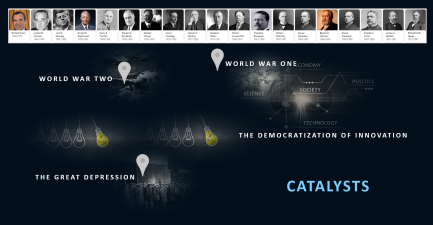 Perhaps most importantly, it forced companies to innovate and boost output as they did their best to contribute to the war effort – the result was the biggest boom in American history: real GDP almost doubled from 1939 to 1944. World War Two and the Government funding that went with it built the foundation for the prosperity of the following decades.
Perhaps most importantly, it forced companies to innovate and boost output as they did their best to contribute to the war effort – the result was the biggest boom in American history: real GDP almost doubled from 1939 to 1944. World War Two and the Government funding that went with it built the foundation for the prosperity of the following decades.
The final catalyst for the purposes of this discussion was the democratization of innovation. The great inventions and those that followed would not have been as impactful, if they could not be enjoyed by the masses. Post World War Two, people bought homes, cars, electronic servants, and more, as each of these became affordable. Here is another dynamic that could/should emerge as we look towards the future and the potential for unequal sharing of emerging innovation.
As we dig deeper into each of these catalysts, we can understand how they drove convergence. The Great Depression and World War Two directly contributed to what Robert J. Gordon calls the Great Leap. This helps us understand the nature of catalysts: had there been no Great Depression – there would likely have been no New Deal.
A CLUSTERING OF EVENTS
A visual representation helps us appreciate the impact of convergence – and the role it played in creating this special century. Look at this representative sample of the major actions, events, and activities that are clustered between an age of astounding innovation and 1970 – the end of the special century. Without the catalysts described above, much of this (good, bad, or indifferent) may never have happened.
We can therefore attribute the realization of great advancements in human development during this period to these catalysts and the convergence they enabled. Would we have arrived here anyway? Does it take major events like wars and depressions to stimulate society to act? If so, what does that mean for our future. 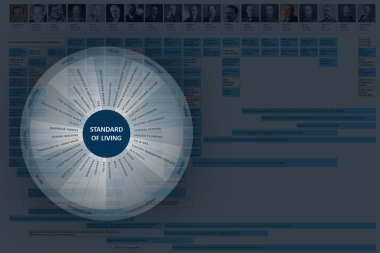 This journey through history, although interesting, has a greater purpose. Are there similarities between that late 19th century early 20th century period and today? Clearly, we are on the threshold of what could be the next great inventions. Artificial Intelligence is already being called a general- purpose technology that is comparable to electricity. All indications point to another likely period of astounding innovation – but much like the special century, are there other catalysts that drive convergence? This time, it may be more complex as we add several other domains to the convergence discussion.
This journey through history, although interesting, has a greater purpose. Are there similarities between that late 19th century early 20th century period and today? Clearly, we are on the threshold of what could be the next great inventions. Artificial Intelligence is already being called a general- purpose technology that is comparable to electricity. All indications point to another likely period of astounding innovation – but much like the special century, are there other catalysts that drive convergence? This time, it may be more complex as we add several other domains to the convergence discussion.
CONVERGENCE IN OUR EMERGING FUTURE
If we accept that the next two decades are likely to experience astounding levels of innovation, then this period requires actions and decisions that help shape our future. Convergence will be required across the same domains experienced years ago: science, technology, economy, business, politics, and society. 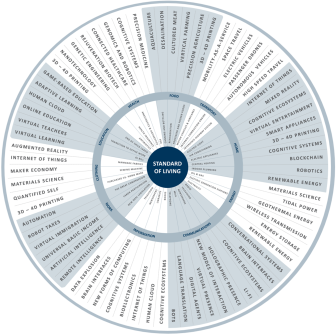 Add to this list ethics and the environment. The challenge then is to manage a more complex level of global convergence in order to create a future that once again elevates our well-being – and this time on a global scale.
Add to this list ethics and the environment. The challenge then is to manage a more complex level of global convergence in order to create a future that once again elevates our well-being – and this time on a global scale.
Built on the historical view of innovation, this second innovation wheel takes a futuristic perspective. Can we realize improvements across these areas of our well-being by harnessing advancements in science and technology? If we do, is Robert J. Gordon right when he says it won’t compare to those humanity-altering achievements during that special century? Will the appropriate level of convergence emerge as the enabler? Will we experience a level of innovation democratization that mitigates the risk of inequality and societal unrest? We saw how important that was during the special century.
Those catalysts referenced before were painful ways to stimulate action in a reactive manner. Are there catalysts that drive future action proactively? If so, what are they? Is it the pace of innovation and an appreciation for the unintended consequences it might create? Is it climate change? Geopolitical instability? An innovation arms race? I’d love to hear your thoughts on the potential catalysts of convergence. In the meantime, history may be quite instructive. Inaction during the great depression amplified its impact. Look at the cluster of actions, events, and activities required to steer the developed world towards improved prosperity. This emerging tipping point requires nothing less if we are to realize a global advancement in human development that seems within our reach.

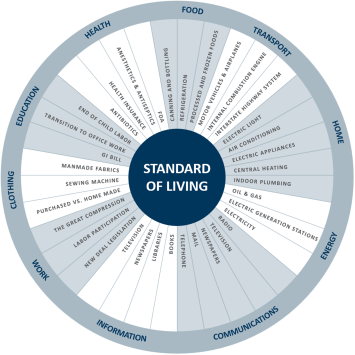
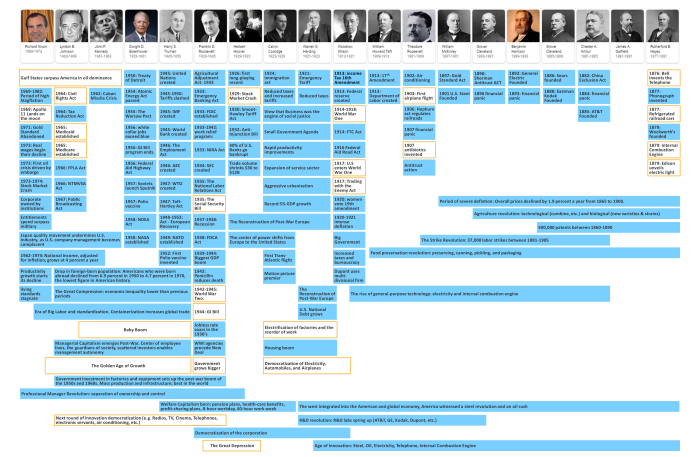
[…] as I described in my post on Convergence, advances in one domain can impact and accelerate those of another. It requires the right catalysts […]
LikeLike
[…] I reflected on my Thoughts for 2019, three themes stood out. I’ve already written about Convergence and Acceleration, so this post will focus on possibilities. As described recently, I believe the […]
LikeLike
[…] Convergence is one of the key dynamics I expect/hope to see more of this year. A century ago, convergence across multiple domains ushered in unprecedented advancements in human development. Multiple forces will drive a similar level of convergence in the coming decade. […]
LikeLike
[…] the pace will ultimately force stakeholders across multiple domains to take action. Much like the Domain Convergence that occurred during our most Transformative Period in History, convergence is required if we are to […]
LikeLike
[…] the sessions, I shared three key themes from my expectation post: Acceleration, Possibilities, and Convergence. If we truly are entering another period of great invention, what action is required by leaders to […]
LikeLike
[…] opened the session with three key themes from my Expectation post: Acceleration, Possibilities, and Convergence; Here is a look at the insights that […]
LikeLike
[…] looking at transformative periods throughout history, it is apparent that Convergence was a critical driver of change. While I am still hopeful of the ultimate convergence across […]
LikeLike
[…] looking back to our most transformative period (late nineteenth, early twentieth century), was the Convergence that occurred across multiple […]
LikeLike
[…] in the Lessons of History. Those that follow my work know that I am a big believer in this type of Convergence. Mr. Baldwin describes this same dynamic in this manner: The massive changes that are coming will […]
LikeLike
[…] the geopolitical domain to the societal, science, and technology domain, you can begin to see how Convergence is once again leading us to a Tipping Point. So into my Book Library goes The Future is […]
LikeLike
[…] Future Scenarios are spawned by convergence across multiple domains. The most obvious Convergence is occurring between science and technology. I have been posting links to numerous articles that […]
LikeLike
[…] Convergence refers to a virtuous cycle where events in one domain spur action in another. The great inventions (electricity, telephone, and internal combustion engine) were clustered together at the end of the 19th century, forming a virtuous cycle that drove a period of astounding innovation. This innovation cycle continued well into the 20th century – a dynamic that could be emerging again. Yet, science and technology are simply two domains that converged during this period. The others were the economy, business, politics, and a broader set of societal issues. […]
LikeLike
[…] we will see more change in the coming decade than we have in the last 100 years. He speaks of the Convergence of building blocks in the science and technology domains which contribute to the quickening pace. […]
LikeLike
[…] large number of individuals and institutions, will dictate the path and the timing. In my words, Convergence across multiple domains (or a lack thereof) makes prediction impossible. What he does present is a […]
LikeLike
[…] paint this picture for a reason. There are multiple forces Converging to shape our future, and a myopic focus on one force fails to consider all the others. While some […]
LikeLike
[…] Convergence continues on its transformative path, intersections can be found everywhere. In this example, it is […]
LikeLike
[…] factors are one area of Convergence that is shaping our future. The accelerating progression of science and technology gets a lot of […]
LikeLike
[…] businesses will be those that can adapt to any type of unexpected emergency. I described the Convergence of multiple facets of our world, and how this convergence likely shapes the future. Disease, […]
LikeLike
[…] learn from the past, even rarer that they draw the correct conclusions from it.” It was Convergence in the postwar era of international institutions, domestic government policies, and private-sector […]
LikeLike
[…] know that multiple levels of Convergence complicate our understanding of the future, and by its very nature, shapes it. Convergence across […]
LikeLike
[…] to zooming out. Given the number of building blocks emerging in our exponential world, seeing the Convergence is […]
LikeLike
[…] early 2019, I described the Three Focus Themes for the year. They were Acceleration, Convergence, and Possibilities. Little did I know that one of those themes would factor so prominently in 2020. […]
LikeLike
[…] a post from last year, I focused on the Convergence story. This story has one foot in the past, and another in the future. The realization of great […]
LikeLike
[…] understand the rapidly approaching future relies upon our understanding of various domains that are Converging. It is difficult enough to stay abreast of rapid advancements in science and technology, but […]
LikeLike
[…] Convergence across societal, geopolitical, economic, and other domains, determines our path forward, while at […]
LikeLike
[…] of this reduction. In order to realize this healthy life extension scenario, we must manage the Convergence of enabling innovation and societal factors. The exponential progression of science and technology […]
LikeLike
[…] recent book explores aspects of a broader Convergence story. The book – 2030: How Today’s Biggest Trends Will Collide and Reshape the Future […]
LikeLike
[…] that I believed would set the stage for a very disruptive decade ahead. They were: Acceleration, Convergence, and a Burst of Possibilities. Here we are during a pandemic, and all three are alive and well. The […]
LikeLike
[…] is a fools errand, especially in a world dominated by rapid innovation, uncertainty, and a level of Convergence unseen since the end of World War Two. While we may not predict the future, we can continually look […]
LikeLike
[…] society in ways that prevented a repeat of world wars and the great depression. Several forces Converged to enable this world order. Today, convergence is happening again. A world war is not a catalyst […]
LikeLike
[…] our emerging future is the exponential pace of science and technology. When combined with the Convergence of building blocks that span multiple domains, it becomes easy to see why the world seems to be […]
LikeLike
[…] towards that future has been slow. That could all change in the next decade. Several forces are Converging to accelerate the path of energy. One of those forces is a shift in orientation to […]
LikeLike
[…] matter what the topic, it comes down to one major force: Convergence. Each domain – in this case the environment – is converging with domains like […]
LikeLike
[…] futures. Given the high levels of uncertainty, the sheer number of building blocks, and the Convergence occurring across domains, exploration, learning, and dialog are as critical as ever. You can […]
LikeLike
[…] the heart of foresight work lies the analysis of domains that shape the future. It is in the convergence of these domains that the future emerges. Geopolitics is one complex area of convergence that has massive […]
LikeLike
[…] Predictions in this period of great invention are wrought with uncertainty as a number of forces converge to shape the path forward. Advances in materials science and renewable energy (among others) are […]
LikeLike
[…] Convergence is a big part of how the future reveals itself. I have written often about convergence across geopolitics, science and technology, and other domains. Even a domain like philosophy is converging in ways that help shape our future. Macro-level forces illuminate possible futures, and forces in the societal domain play a major role in determining that future. This article on population provides a great example. […]
LikeLike
[…] a post from 2019, I described the building blocks that established our modern society. It was convergence across […]
LikeLike
[…] building blocks that combine to shape the future, challenging our ability to track its complexity. Convergence across aspects of science, technology, economic forces, politics, society, our environment, and a […]
LikeLike
[…] is the sheer number of building blocks that currently exist, and those that are emerging. Factor in convergence occurring across these building blocks, and you have a recipe for uncertainty, unpredictability and […]
LikeLike
Great reaading this
LikeLike
[…] of the economy, politics, and the future. It is this focus on multiple domains and how they converge that enables institutional change. There is more to tell from this great book. I will explore it in […]
LikeLike
[…] rethinking humanity series, Tony Seba and James Arbib describe humanity transformed by convergence across five foundational sectors: energy, transport, information, food, and materials. This […]
LikeLike
[…] humanity series, Tony Seba and James Arbib describe a brand new possibility space fueled by convergence across five foundational sectors: energy, transport, information, food, and materials. This […]
LikeLike
[…] humanity series, Tony Seba and James Arbib describe the choices that lie ahead, as convergence across five foundational sectors drive a phase change: energy, transport, information, food, […]
LikeLike
[…] post I wrote to usher in 2019. One of those macro-level forces was acceleration (the other two were convergence and a burst of possibilities). As we close 2021, acceleration is all around us, but in 2019, no one […]
LikeLike
[…] is a great example of the broad ecosystems that form around a given domain. It also illuminates the convergence associated with them. For example, space intersects with domains like Internet, communications, […]
LikeLike
[…] the economy is increasingly a critical area of convergence, those looking to the future should pay close attention to the progression of CDBCs. This video […]
LikeLike
[…] growing convergence story promises to alter our view of possible futures. There are a number of likely shifts that make […]
LikeLike
[…] coming next. That’s why a focus on cycles is important to our understanding of the future. The convergence of past cycles is happening again. A world war is not a catalyst this time (at least not yet), but […]
LikeLike
[…] the rapidly approaching future relies upon our understanding of the various domains that are Converging. It is difficult enough to stay abreast of rapid advancements in science and technology, now […]
LikeLike
[…] 1990s, attributed to Gen X and the first wave of millennials entering the workforce. The forces of convergence described through this Blog play a role, as the global decline in fertility rates contributes to […]
LikeLike